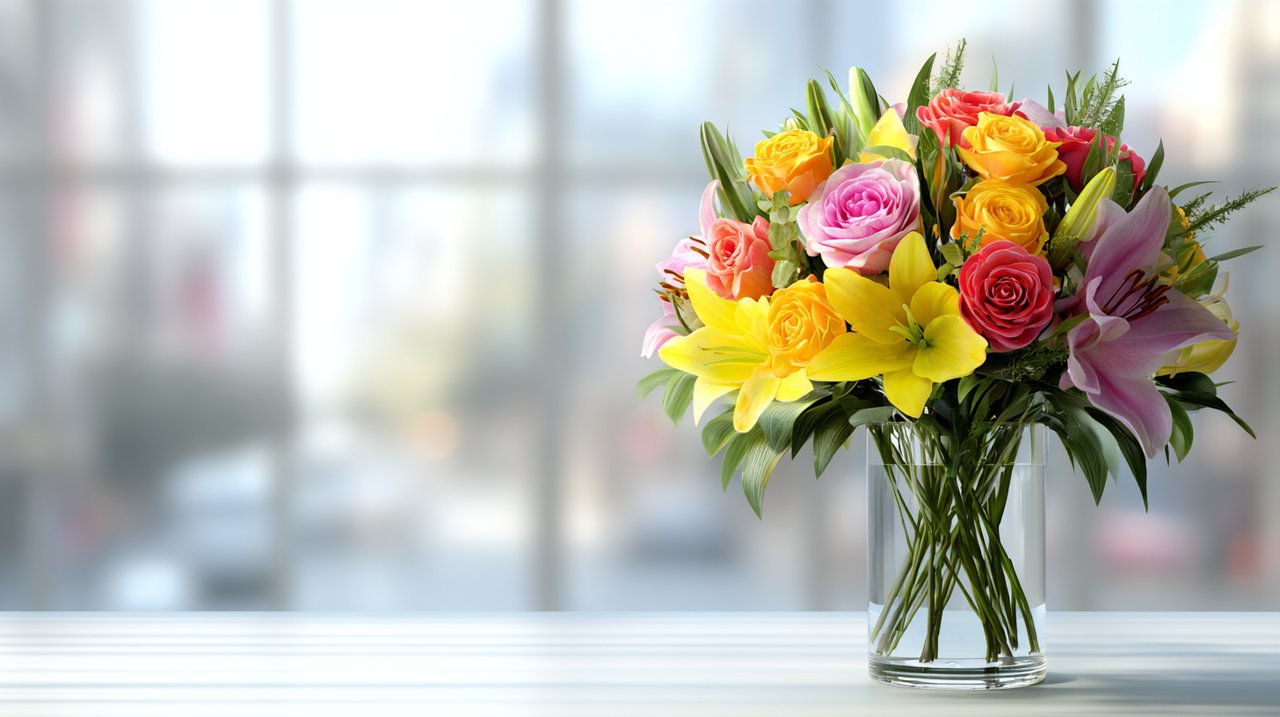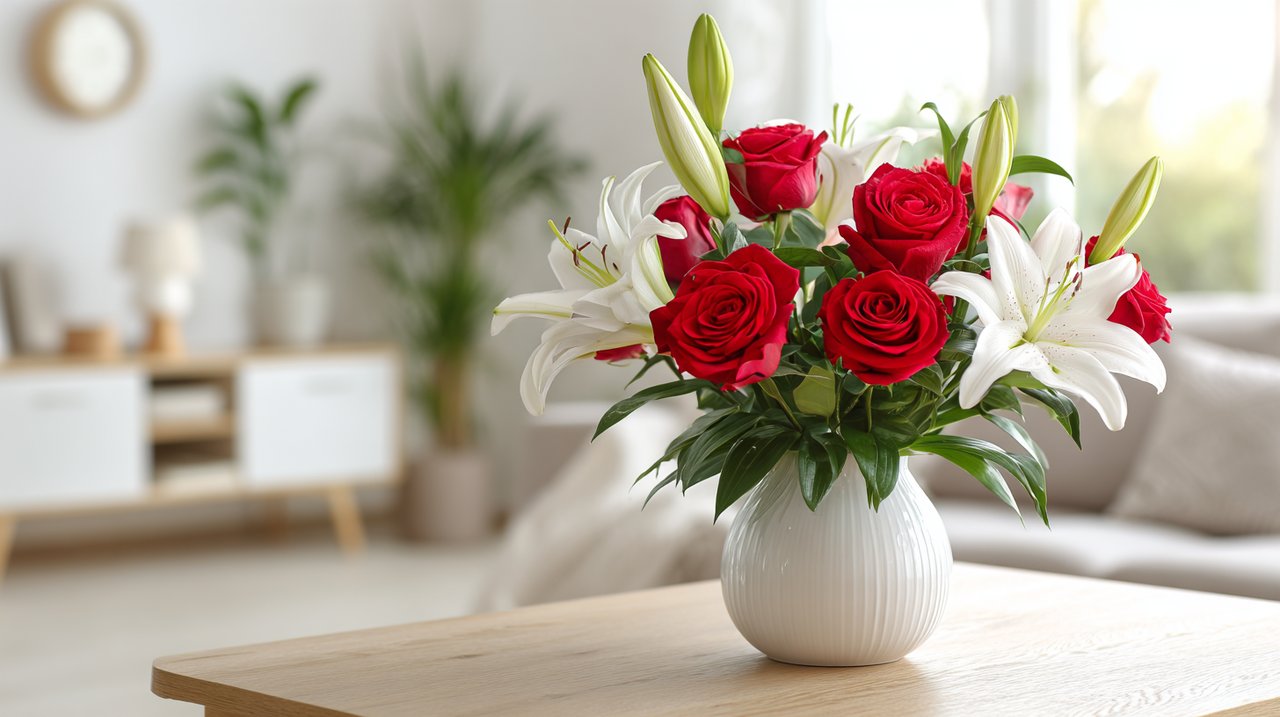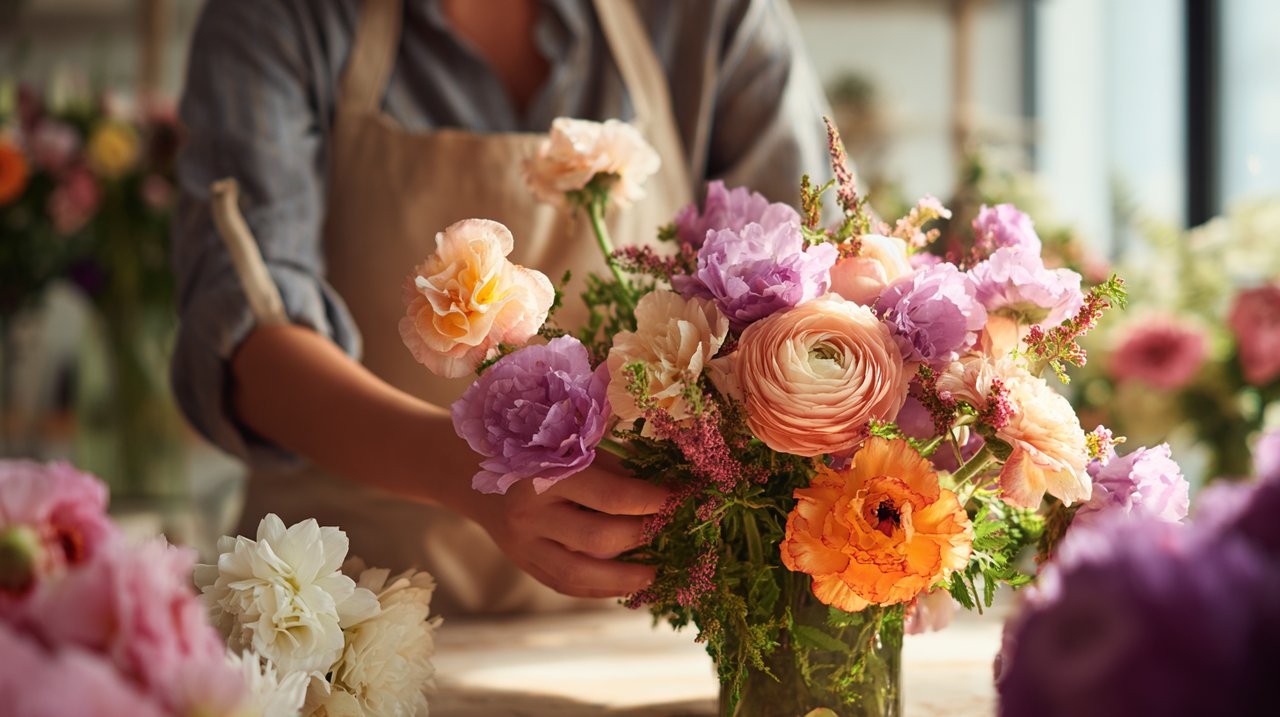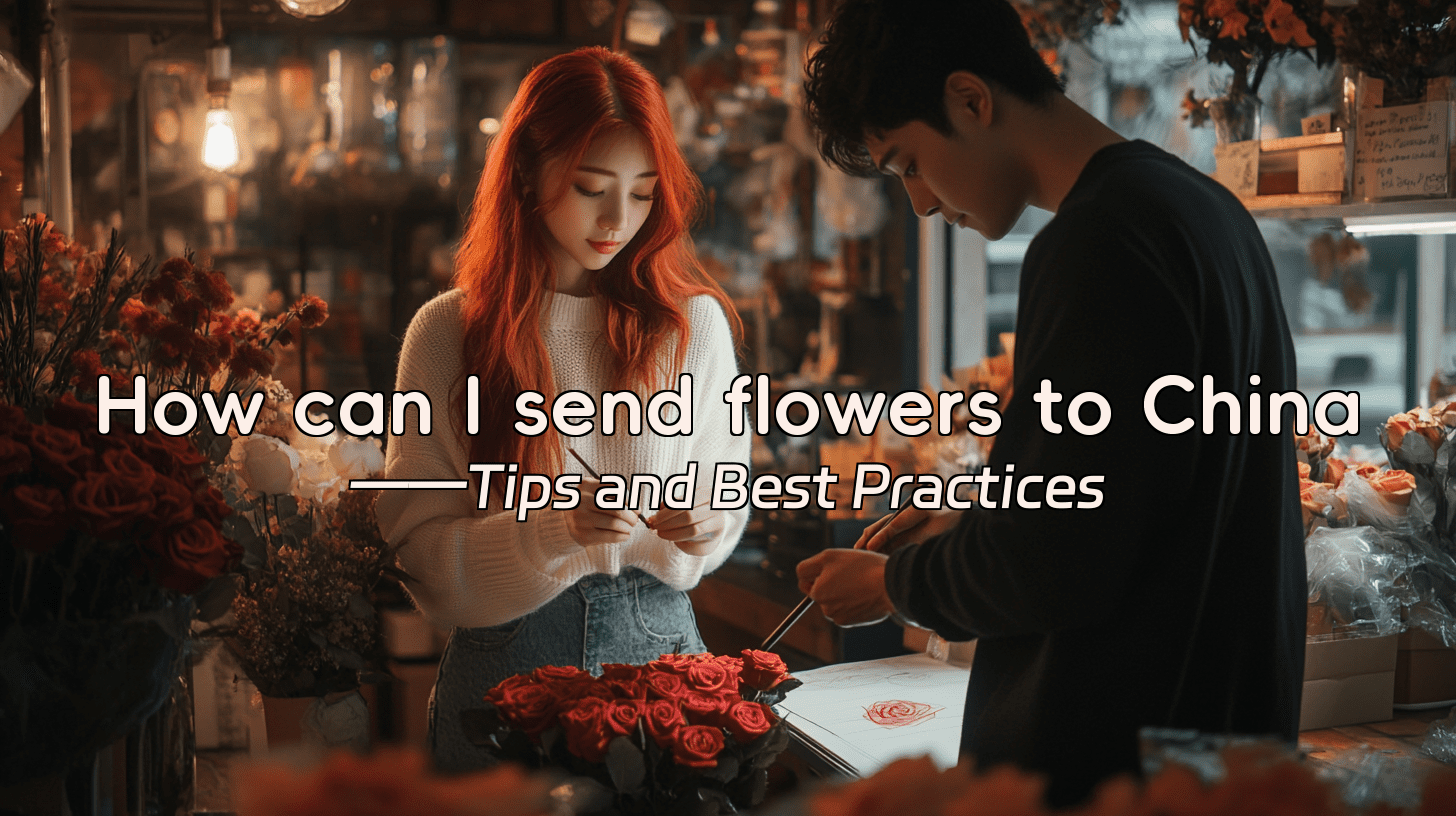Navigating the complexities of international flower delivery to China is often perceived as a formidable task. It demands not only the bridging of vast geographical distances but also a nuanced understanding of cultural intricacies and local customs.
Many individuals find themselves in a quandary, apprehensive about timely delivery, the potential compromise of floral quality, and, perhaps most crucially, the accurate conveyance of their heartfelt sentiments.
Yet, through a systematic approach and informed insight, these challenges are far from insurmountable. This guide offers five distinct, actionable, and credible micro-strategies, empowering you to confidently undertake the mission of sending flowers to China, ensuring each bloom truly embodies your sincerest emotions and well wishes.

Opting for Renowned International Flower Delivery Platforms: A Path to Convenience and Assurance
The fundamental approach involves prioritizing international flower delivery services that have garnered global acclaim. These platforms typically boast extensive global networks and mature operational frameworks, enabling them to provide consistently stable and reliable service.
The inherent value of these platforms lies in their established, long-term collaborations with reputable local florists. This ensures that the entire process—from flower procurement and careful packaging to the final delivery—adheres to stringent international standards.
Furthermore, they often provide multilingual customer support, which is invaluable in overcoming cross-border communication barriers, alongside comprehensive order tracking functionalities that offer real-time updates on your floral consignment.
Prudent selection necessitates a thorough review of user feedback, with particular attention to delivery experiences within China. Verify their coverage across major Chinese cities and even more remote regions.
Crucially, ascertain whether their payment systems accommodate international credit cards or third-party payment platforms. It is imperative to confirm all potential expenditures upfront, including delivery fees, service charges, and any applicable customs duties, to preempt unforeseen costs.
A common oversight, however, is an overreliance on the lowest-priced options, often at the expense of service quality and assurance. Such cost-cutting measures can regrettably compromise the freshness of the flowers or the punctuality of delivery, ultimately detracting from the intended gifting experience.
Exploring Local Chinese Online Florists: Authenticity and Distinctiveness
Beyond the global giants, a nuanced approach involves delving into and leveraging the services offered by local Chinese online florists. These indigenous platforms frequently provide floral products that are more authentically regional and distinctive, underpinned by a deeper understanding of the Chinese market itself.
The distinct advantages are manifold. Local florists can present a broader array of seasonal native flowers, with design aesthetics and arrangements that resonate more profoundly with Chinese sensibilities.
Moreover, they often offer more flexible delivery options, such as same-day delivery or specified time slots, and their pricing can prove highly competitive.
The practical steps entail navigating popular Chinese e-commerce platforms like Taobao and JD.com, or local life service platforms such as Meituan and Ele.me, to discover local florists. Many established local florists also operate their own WeChat mini-programs or independent websites.
Utilizing translation tools can facilitate communication, and reviewing other users’ evaluations and shared photos is crucial for assessing the florist’s professionalism and service quality.
In a strategic comparison, local florists may hold an edge over international platforms in terms of delivery speed and floral freshness in specific regions, particularly outside first-tier cities. However, it is noteworthy that their payment methods predominantly support WeChat Pay or Alipay, which may necessitate additional setup for international users.
Understanding Chinese Flower Gifting Culture: Intent and Taboos
At the very heart of gifting flowers to China lies not merely the botanical specimen, but a profound engagement with and respect for China’s rich tradition of gift-giving culture. This informed understanding is paramount to ensuring your heartfelt intentions are accurately received and to meticulously avoid any inadvertent cultural missteps.
The profound importance of this cultural literacy is underscored by the fact that in Chinese culture, the color, species, quantity, and even the arrangement of flowers are imbued with rich symbolism. For instance:
- Red traditionally symbolizes celebration and good fortune, making it a prevalent choice for festive occasions.
- Lilies, embodying ‘bǎinián hǎohé’ (百年好合), signify a harmonious union for a hundred years, rendering them an excellent choice for weddings and blessings for couples.
- Chrysanthemums, conversely, are predominantly associated with mourning and must be strictly avoided in celebratory contexts.
Numbers, too, carry significant symbolic weight. The number ‘4’, for example, is considered inauspicious due to its phonetic similarity to the word ‘death’ (死, sǐ), while ‘8’ is widely favored as it rhymes with ‘wealth’ or ‘prosperity’ (发, fā).
What is particularly thought-provoking is the depth of understanding ancient Chinese scholars held regarding flora, far beyond their superficial beauty. Zhou Dunyi’s classic Song Dynasty essay, On the Love of the Lotus (爱莲说), uses the lotus’s ability to ’emerge unstained from the mud, and to be cleansed without being seductive in the clear water’ to metaphorically represent the noble character of a gentleman.
This profound insight has significantly shaped the cultural attachment and philosophical meaning Chinese people ascribe to flowers. It is not merely aesthetics; it is a philosophy.
礼者,天地之序也。 — The Book of Rites (Lǐ Jì)
For optimal outcomes, before selecting flowers, it is essential to ascertain the recipient’s cultural background, age, and the specific occasion. When in doubt, consulting a Chinese-speaking friend or the florist’s customer service for professional advice is highly recommended.
Crucially, avoid gifting white or yellow chrysanthemums (unless for a mourning occasion) and steer clear of bouquets containing four blooms. Opting for auspiciously symbolic and vibrant flowers, such as red roses, carnations, or sunflowers, generally proves to be a safer and more universally appreciated choice.

Ensuring Flower Quality and Freshness: The Imperative of Logistics and Packaging
The foundational approach to guaranteeing the quality and freshness of flowers rests upon a meticulous focus on the entire logistics and packaging chain, from the moment of harvest to the point of delivery. This attention to detail is the bedrock of preserving floral integrity.
The underlying principle is clear: flowers are inherently perishable goods, and long-distance transportation poses a significant challenge to their freshness. Therefore, highly efficient and professional logistics management, coupled with scientifically engineered packaging techniques, are paramount.
These elements collectively minimize spoilage during transit, ensuring the flowers arrive in their optimal state.
Several key elements warrant close scrutiny when assessing a service’s commitment to freshness:
- Cold Chain Transportation: Confirm whether the florist or platform utilizes cold chain logistics, especially during warmer seasons. This is absolutely critical for maintaining floral freshness.
- Professional Packaging: Superior packaging should incorporate mechanisms to secure the bouquet, such as supports, along with moisture-retaining materials like damp cotton or water tubes for the stems. External shock-absorbing and pressure-resistant layers are also vital to protect the flowers from damage during movement.
- Delivery Time: Whenever possible, select options that offer expedited delivery services, such as express or local same-day delivery, thereby significantly reducing the flowers’ transit time.
A common misconception is to simply accept a florist’s promise of freshness at face value. In reality, one must delve into the specific measures underpinning such promises.
This includes inquiring about their supply chain management protocols, packaging methodologies, and the exact transportation methods employed. Prior to placing an order, seeking clarity on these details is an astute way to assess the service’s true reliability.

Flower Selection for Specific Occasions: Meaning and Pairing
A refined approach dictates the meticulous selection of flower types and arrangements, each imbued with appropriate symbolism, tailored to distinct occasions. This ensures the most fitting emotions and well wishes are conveyed.
The inherent value of this lies in the fact that flowers, as potent carriers of emotion, derive their expressive power directly from the precision of their selection. Customizing floral choices to the specific occasion demonstrates the sender’s thoughtfulness and care, imbuing the gift with deeper significance.
Consider these examples and their strategic pairings:
- Birthday Celebrations: Recommended choices include red roses (passion), carnations (love and respect), or sunflowers (optimism, vitality). Quantities like 9 (longevity) or 11 (wholehearted devotion) blooms are often favored.
- Anniversary Commemorations: Roses (love), lilies (eternal harmony), or tulips (declaration of love) are excellent options. Complementary flowers like baby’s breath, symbolizing ‘eternal’ love, can enhance the message.
- Business Openings: Flowers conveying ‘prosperous business’ such as Anthuriums, Birds of Paradise, or combinations of Lucky Bamboo and lilies (symbolizing ‘flourishing business’) are highly suitable. It is advisable to avoid potted plants, as they might be misinterpreted as ‘rooted and stagnant.’
- Visiting Patients: Opt for flowers that symbolize ‘speedy recovery’ like carnations, calla lilies, or gerbera daisies, preferably in muted, elegant tones. Avoid highly fragrant flowers or those with excessive pollen, which might discomfort the patient.
For optimal outcomes, engaging with a professional florist is often the best course of action when uncertainty arises. They can offer personalized recommendations based on your specific needs and the occasion.
Simultaneously, considering the recipient’s personal preferences, such as their favorite colors or flower types, can render the gift even more surprising and uniquely personal.
Sending flowers to China transcends a mere commercial transaction; it is, fundamentally, an emotional bridge spanning cultures and geographies. By judiciously selecting delivery platforms, cultivating a profound understanding of cultural nuances, rigorously overseeing logistical quality, and thoughtfully customizing bouquets for specific occasions, you gain the wisdom and confidence to ensure every bloom precisely carries your blessings and affection.
Now, it is time to translate these insights into practice, planning your next floral surprise and allowing your heartfelt sentiments to blossom in the distant land.
💡 Frequently Asked Questions
When sending flowers to China, it's important to choose a reliable international delivery service, understand local customs and flower meanings, ensure quality and freshness during transport, and select appropriate flowers for the occasion.
To guarantee flower quality, look for services that use cold chain transportation, professional packaging, and offer expedited delivery options to minimize transit time.
In Chinese culture, flowers carry significant meanings, such as red flowers symbolizing celebration and good fortune. It's essential to avoid giving certain flowers like chrysanthemums in celebratory contexts and to consider the symbolism of colors and numbers.
Yes, local Chinese online florists often provide more authentic and regionally distinctive floral products. Platforms like Taobao, JD.com, and local services like Meituan can be useful for finding these florists.
For birthdays, red roses and sunflowers are great choices. For anniversaries, consider roses or lilies. For business openings, flowers like Anthuriums are ideal, while for visiting patients, opt for muted flowers like carnations.


